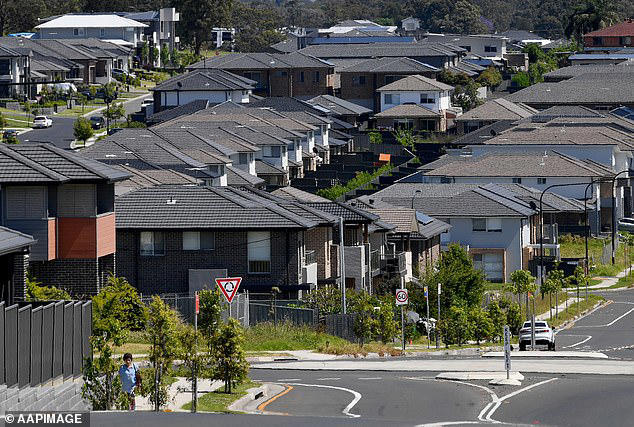Property Analyst Claims that Stage Three Tax Cuts Will Result to House Prices Increase
Property analyst Niro Thambipillay gives a dire warning, claiming that stage three tax cuts will result in hikes in home prices.
It is crucial to keep in mind that there can be a complex and nuanced link between tax cuts and house prices, contrary to the assertion that the third stage of tax cuts will result in higher home prices. Tax reductions have the ability to boost the economy, raise disposable income, and enhance demand for housing, which could lead to an increase in prices. However, a number of factors, such as supply and demand dynamics, interest rates, governmental regulations, and regional market conditions, have an impact on home prices.
Summary:
- A buyer’s agent forecasts rising prices
- Stage three tax reductions will encourage additional lending

Australian property prices have risen in the past six months and are expected to continue doing so.
Property Prices Could Be Set to Explode Again
According to an Australian real estate expert, a number of variables could lead to a fresh boom and cause property values to soar.
The price increase, according to Sydney-based investor and buyer’s agent Niro Thambipillay, will take place in 2024. He thinks that the third stage of planned tax cuts, which coincide with anticipated interest rate decreases, will be what sparks the rise.
The Reserve Bank of Australia held interest rates steady for a second consecutive month in August, but they are still at an 11-year high of 4.1%.
Many analysts predict that after gaining 12 times since May 2022, they will start to decline in the upcoming months.
Anyone making more than $50,000 will have more money in their wallets thanks to the stage three tax cuts, which take effect on July 1, 2024.
Mr. Thambipillay reasoned that more people would have extra money to invest in areas like the real estate market as a result.
He asserted that the decrease in interest rates and the reduction in taxes will persuade banks to increase lending, notably for home loans.
Recent property price rises have already proved the resilience of the housing market.
Recent increases in real estate prices, according to Mr. Thambipillay, have already demonstrated the housing market’s durability.
After falling in the second half of 2022, real estate prices nationwide rose 2.3% in the first half of 2023.
PropTrack’s predictions indicate that this pattern will persist, with significant price increases predicted in Sydney, Melbourne, Adelaide, and Perth this year and more subdued returns next.
Due to record-high immigration, which makes it difficult for first-time homeowners to enter the real estate market, house prices have risen in Sydney for the sixth consecutive month despite an increase in interest rates.
According to CoreLogic data, the median price in Australia’s most expensive capital city market increased by 1% in July, reaching an even more unaffordable $1,333,985.
In March, home prices in other big capital cities started to rise once more.
- Melbourne home prices have increased for five months running, climbing by 0.3% in July to $923,881.
- Brisbane’s housing costs increased by 1.4% last month to $819,832.
- Perth values increased by 1% to $625,969.
- Adelaide’s rebound started in April, but since then, monthly rises have been greater, with prices in July jumping by a further 1.4% to $722,793.
- In July, Darwin prices grew for the third consecutive month, up 0.5% to $583,913.
Prior to working as a buyer’s agent, Mr. Thambipillay was an investor in real estate.
He decided against purchasing a house in Sydney based on his own study, therefore he bought an investment property in Western Australia in 2002.
In just 18 months, he claimed to have doubled his money.
Even while Mr. Thambipillay’s video received a staggering 296,000 views, not everyone shared his opinions.
Middle-class, higher-income workers will profit from the introduction of a new 30% tax bracket in the stage three cuts for Australians making $45,000 to $200,000 annually.
Those making $80,000 would receive $875 in tax refunds for the 2024–25 fiscal year as opposed to the 2023–24 and 2022–23 fiscal years.
Australians making $60,000, which is just under the middle income threshold of $65,000, receive $375 in return.
However, people with higher incomes will do much better, with those making $120,000 receiving $1,875.
The generous return for those making $200,000 is $9,075.
The reduction of the number of tax brackets from five to four on July 1st, 2024—the first time since 1984—is the most significant shift brought about by the stage three tax cuts.
What you should know about the stage three tax cuts for the upcoming year
Since they were announced in 2018, the stage 3 tax cuts have been a subject of contention. These tax reductions were intended to ease the burden of “bracket creep” on Australian taxpayers while also streamlining the tax system.
WHAT IS THE STAGE 3 TAX CUTS?
Simply put, changes were made to the specifics of how much income tax you pay based on your income by the previous Australian government. People who earn higher salaries will be primarily impacted by the third stage of tax cuts, and they will pay less tax.
Tax rates for middle- and high-income earners are reduced in this third and final phase of the three-part plan put forth by the Australian government. The income thresholds and tax rates in the marginal tax brackets have changed as a result of the most recent tax reduction. The tax brackets have already undergone revisions in the 2018–19 and 2019–20 fiscal years, and more adjustments are slated to take effect on July 1, 2024.
For the first time since 1984, there will be only four tax brackets when the third stage of tax cuts takes effect.
The modifications will take effect on July 1st, 2024.
The amount of tax that an Australian will owe based on their wage, as well as the amount they might anticipate receiving back, are listed here.
HOW MUCH TAX YOU’LL PAY
- $18,200 and under: Nothing
- $18,201 to $45,000: 19%
- $45,001 to $200,000: 30%
- $200,001 and over: 45%
WHAT YOU’LL GET BACK
- $45,000: Nothing
- $60,000: $375 as tax burden falls to $10,692 from $11,067
- $80,000: $875 as tax burden falls to $17,192 from $18,067
- $120,000: $1,875 as tax burden falls to $29,992 from $31,867
- $150,000: $3,975 as tax burden falls to $39,592 from $43,567
- $200,000: $9,075 as tax burden falls to $55,592 from $64,667
- $250,000: $9,075 as tax burden falls to $79,092 from $88,167
- $300,000: $9,075 as tax burden falls to $102,592 from $111,667
Tax liabilities for 2024-25 compared with 2022-23 and 2023-24
Schedule your Tax Return Appointment

About Lan Nguyen
Lan is the Founder and Chief Strategist at Success Accounting Group, Melbourne based CA firm. In a matter of short 8 years she has built up a reputable Chartered accounting firm with 3 offices and a team of 6 professional accountants and support team members. Her mission is to provide Innovative and Strategic Financial advice to help her customers make smarter financial decisions today for a brighter future.
Success Accounting Group is for established business owners who would like help to grow a sustained business. As a business owner you understand what drives your business success with our accounting team taking care of the rest.




